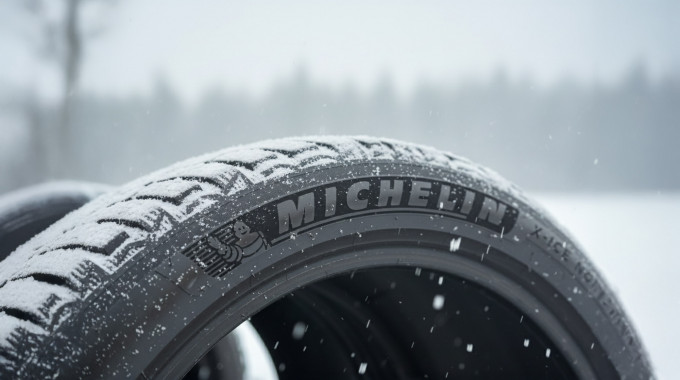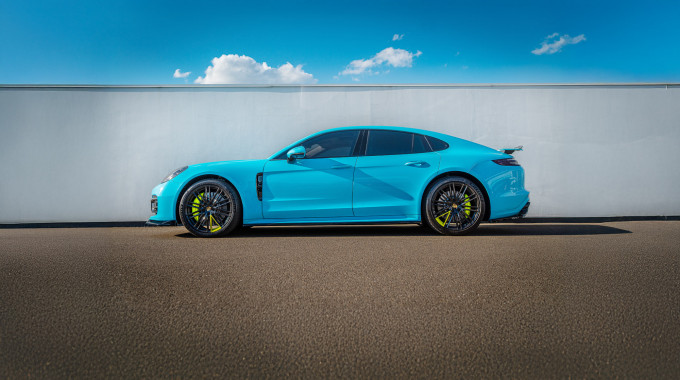
First Drive: 2022 Audi RS e-tron GT F Review
Canada Drives hits Quebec’s Mécaglisse frozen race circuit to put Audi’s new 637 horsepower, all-electric RS sedan to the test – the near $200K kingpin of the e-tron GT range.
Key Features:
- Powerful and precise powertrain
- Fantastic handling
- Smooth and comfortable
Direct Competitors:
- Porsche Taycan Turbo
- Tesla Model S
- Mercedes-Benz EQS
- Lucid Air
The rapid evolution of electric vehicles has proven how capable they can be in a variety of different scenarios. If performance is your thing, worry not: EVs are taking off where the fastest gasoline-fed speed machines have peaked. The Audi RS e-tron GT is a case in point.
It’s not only quicker off the line than an Audi R8, but also quieter, smoother, and clearly more efficient. But can Audi’s next generation, two-motor quattro system match its old mechanical type? We took Audi’s futuristic sedan out on Quebec’s Mécaglisse frozen race circuit to find out.

2022 RS e-tron GT | Photo: Audi Canada
RS e-tron price and competitors
The e-tron GT is part of the highly technological and exclusive electric luxury sport sedan segment. It’s a category of vehicles that didn’t even exist before the Tesla Model S hit the market back in 2012. This Audi’s rivals are therefore few, but impressive, nevertheless.
The Model S is obviously the main competitor here, but the e-tron GT is also a mechanical clone to the Porsche Taycan against which it competes as well. We could also throw the Mercedes-Benz EQS in the mix, as well as the all-new and highly spectacular Lucid Air.
The RS e-tron GT is the kingpin of the e-tron GT range, both in terms of performance and price. It kicks off at a $177,350 base price. That’s before adding options. Our car was worth $195,990.
Audi e-tron GT interior
The e-tron GT’s cockpit looks and feels like one of Tony Stark’s latest creations. Then again, Ironman was driving this car in the latest Avengers Endgame movie.

2022 RS e-tron GT | Photo: Audi Canada
There’s a pleasing “the future is now” feel to everything inside this car, yet Audi’s signature design language is always clearly apparent. Thick and comfortable leather seats remind us of the best Audi RS models of yore, while the all-digital gauge pod reminds us that this machine fuels only on electricity. The e-tron GT’s cockpit is driver-oriented, with beautifully styled readouts and a familiar simplicity to its controls that almost make it feel organic.
Some limitations in the cabin
That all being said, we weren’t too impressed by some of the cheap plastics in this cabin. At least, not considering this car’s price. The e-tron GT’s rear seat area is also deeply compromised due to the shape of the roof. Accessing the rear seat requires a bit of a contortionist act. And once seated inside, a tall passenger might find it too snug.

2022 RS e-tron GT | Photo: Audi Canada
Finally, cargo space isn’t this car’s best asset, which is ironic, considering electric vehicles get rid of most of the mechanical components that generally occupy the available space. The e-tron GT’s rear trunk will only engulf up to 366 liters of your gear. That’s less than a Honda Accord (473 liters). Luckily, there’s a front trunk that’ll carry an extra 85 liters of cargo.
Performance and Driving Impressions
Audi Canada gave us a chance to sample the RS e-tron GT’s fully electronic quattro system on the snow. Contrary to its traditional all-wheel drive systems that employ clutch packs and differentials to channel power and torque to all four wheels, the RS e-tron GT utilizes two electric motors instead, one installed on each axle.
589 horsepower with access to even more power
Nestled underneath the car’s floor sits a 93.4 kWh battery pack. It powers both motors for a combined output of 589 horsepower and 612 lb-ft of torque. Hit the car’s “overboost” feature, however, and horsepower climbs to 637 horsepower for about 30 seconds.

2022 RS e-tron GT | Photo: Audi Canada
Everything else, meaning where the car’s power and torque are sent to generate grip, is all managed by a computer which decides quicker than any driveshaft, differential or human brain can.
This means that although the e-tron GT is a heavy car (5,200 lb curb weight), it manages a drift maneuver with utmost precision. During a controlled slide, all the driver needs to do is feather the throttle to keep the car sliding. The amount of torque is so immense, and comes on so instantly, that the driver’s inputs are amplified by ten.
Linear power delivery across the rev band
Another interesting observation from the way an electric vehicle manages a drift maneuver is that it doesn’t need to cope with a transmission. In other words, power delivery is linear, with no peaks of power or torque across the rev band. If there’s juice in the battery, power is always on.

2022 RS e-tron GT | Photo: Audi Canada
That said, due to its immense weight and how that weight is centered down low in the car – due to the battery – the driver needs to be awake when the e-tron GT changes directions. There’s an immense transfer of weight happening. And although the car’s computers are fast enough to catch the darn thing when it swings in the other direction, the driver needs to reconfigure its reaction times. In other words, one needs to be alert when operating an RS e-tron GT on ice. There’s no need for sudden moves. Smoothness is key in a vehicle of this precision and speed.
Verdict: is the Audi RS e-tron GT worth it for winter?
There are obviously vehicles that are better suited for winter. And considering the RS e-tron GT’s price tag, some winter cars are more affordable.
But from a capability standpoint, this is an impressive machine, one that, although low to the ground, can tackle an icy patch of tarmac in utmost efficiency. We say that if you can afford it, an Audi RS e-tron GT can indeed be a fantastic winter driver. We’ll even say that electric vehicles are hands down better snow machines than the gasoline automobile ever aspired to be.
Shop our current inventory of used Audi cars & SUVs here.

2022 RS e-tron GT | Photo: Audi Canada
More content about







